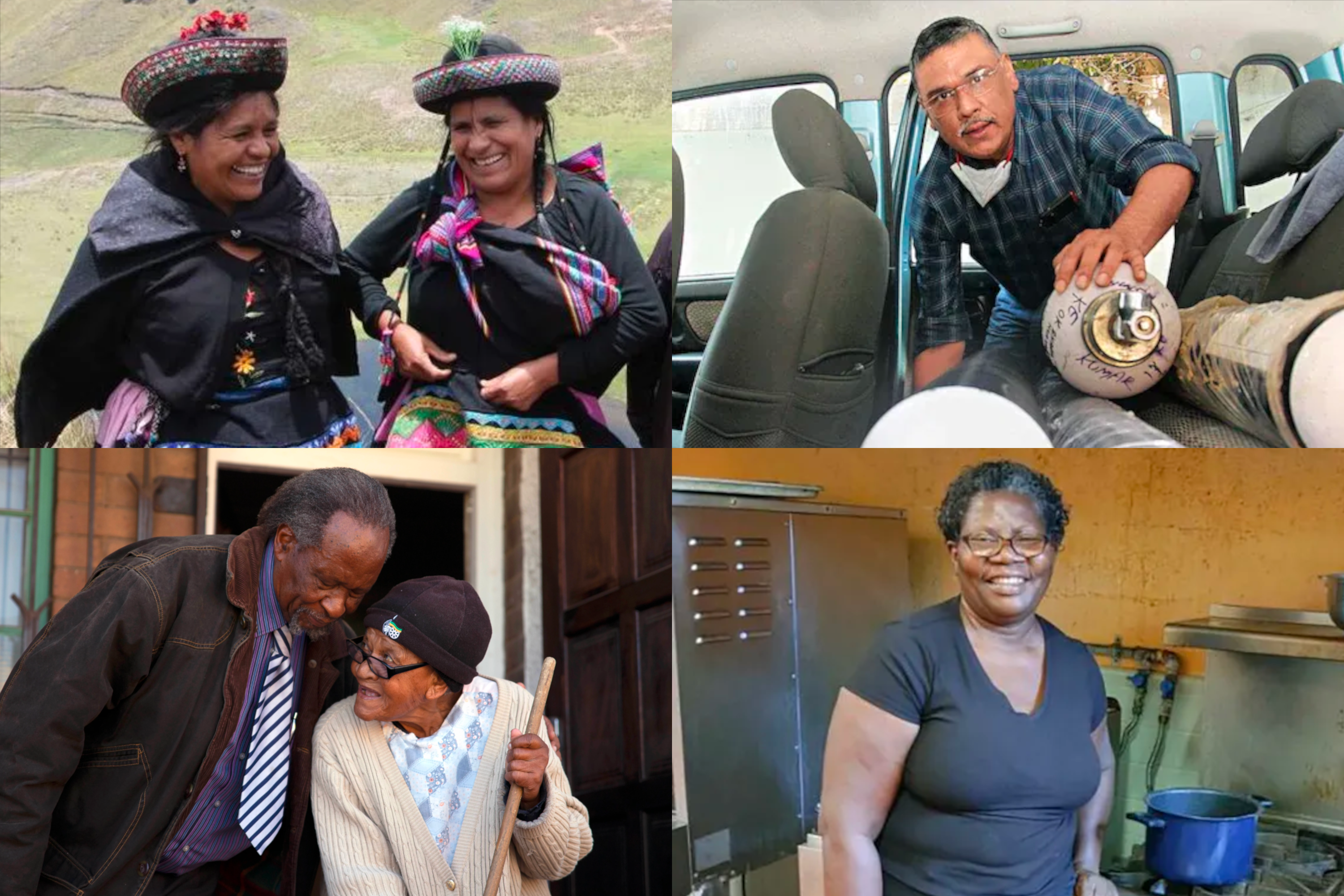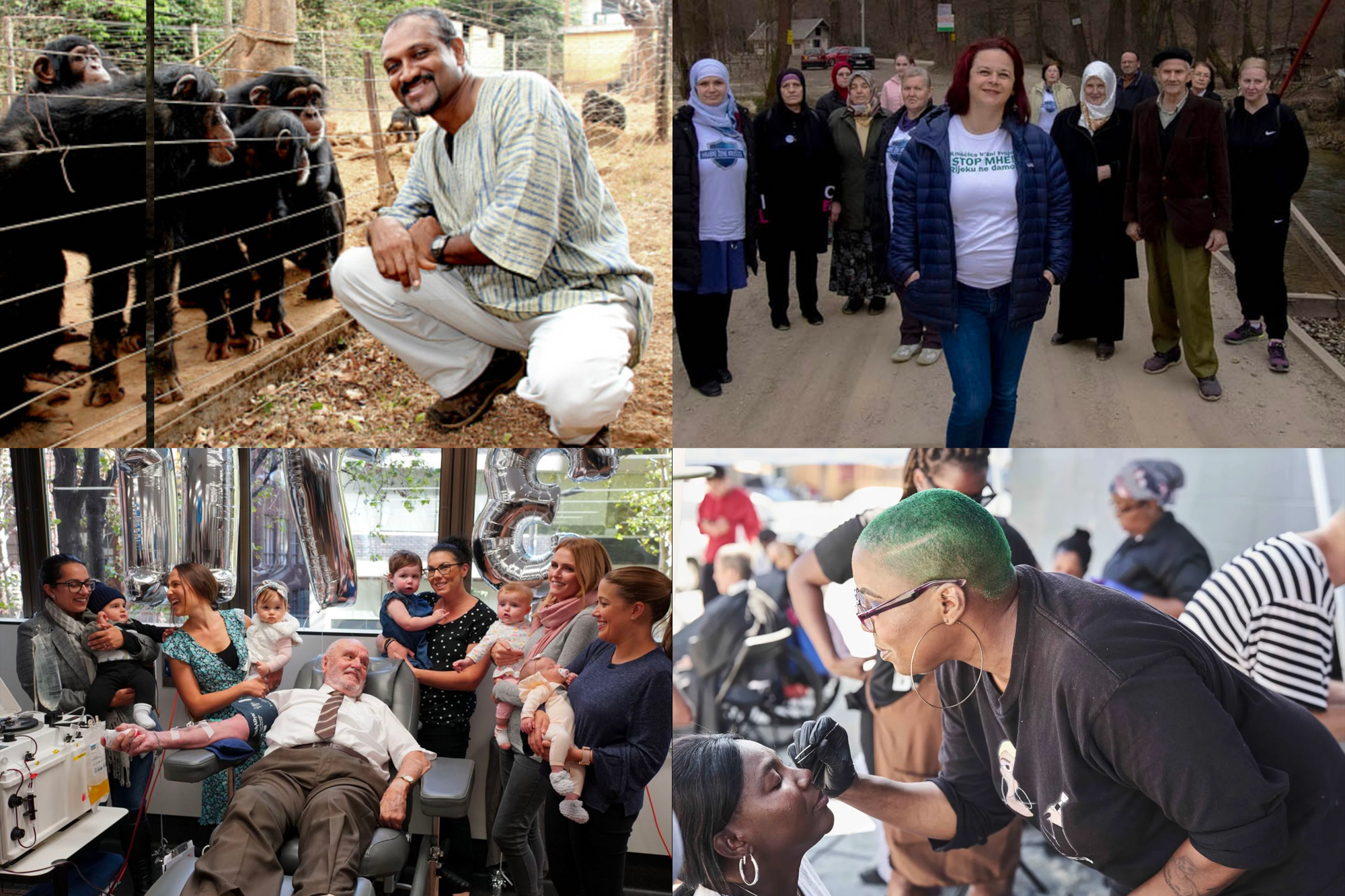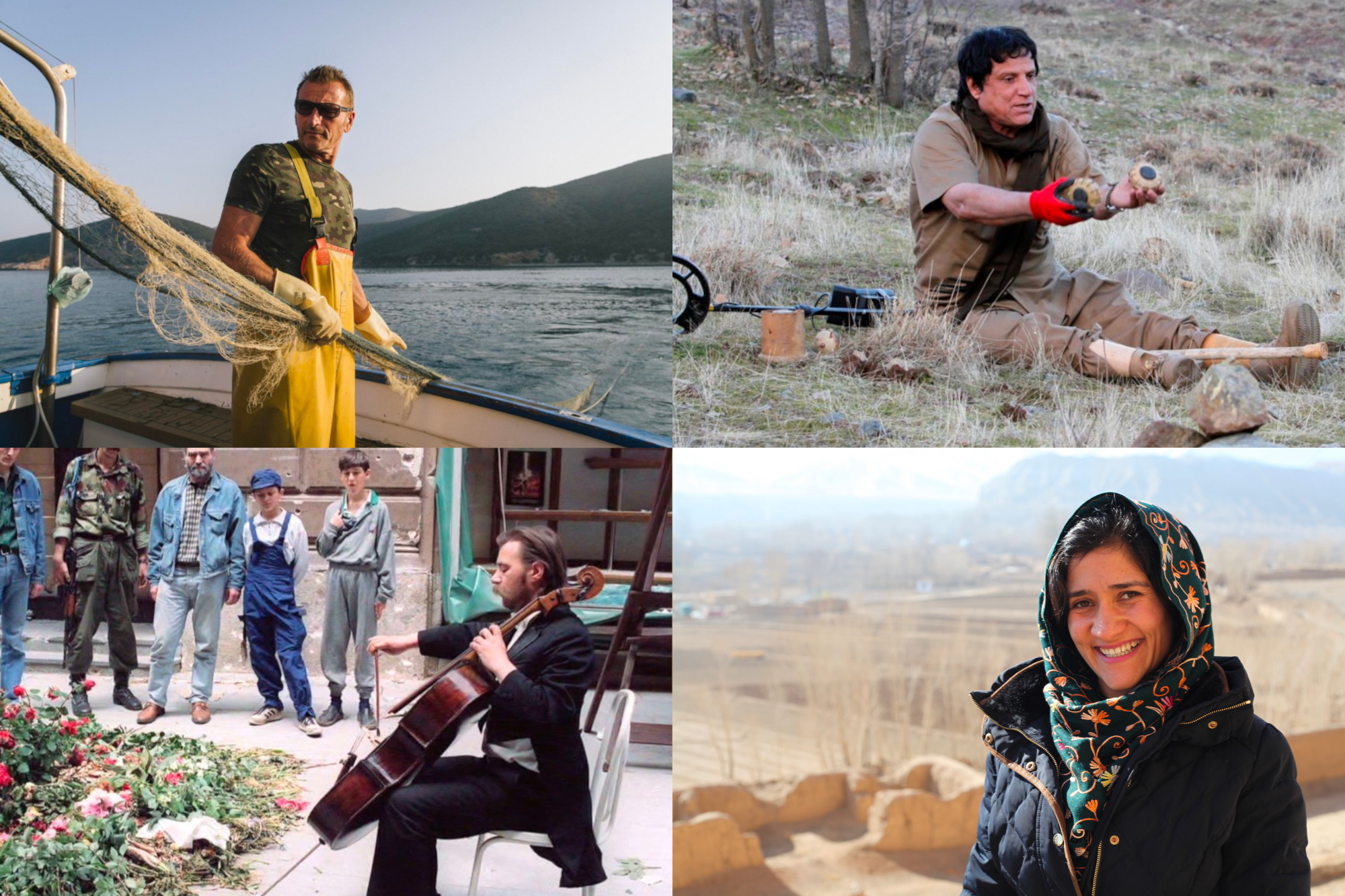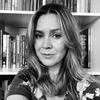In August 2020, we set out on a simple mission: to find one human every week who was making the world a better place. We were in the depths of the first of the COVID-19 lockdowns: the streets of the world were quiet, our relationships hung by a video call, and our survival depended on whether we could trust ourselves and our neighbours to do the right thing.
Each story became a treasure hunt: a search for a tangible answer to the question of what makes someone want to change the world? Over time, what started as simple writing assignment turned into a love affair, and restored our faith in the possibility of what it is to be human. With one hundred stories now under our skin, we couldn’t let this milestone pass without reflecting on how they’ve changed us, and the lessons that we've learned.
The project was inspired by Rutger Bregman’s book Humankind: A Hopeful History, which challenges the assumption of humans as inherently selfish and competitive. Bregman argues that this is wrong, that in truth we are hard-wired to take care of each other and solve problems, and this innate kindness and collaboration in the face of obstacles is what has led to our flourishing as a species. It's a radically different perspective from what we see in the news, which exposes the worst of us – corruption, destruction, and intolerance – on loop, 24/7.
It was also our antidote to celebrity culture. What would it be like, we wondered, to roll back the red carpet and pay less attention to people with great hair, and more to those who are making things better? Only two of the names on our list, footballer Marcus Rashford and chef José Andrés, were well known, and both for good reason. The other 98 stories were about people who have worked tirelessly under the radar for years, sometimes decades, showcasing the best of what it means to be human, without a film crew, hashtag or sponsorship deal.
Our first story was about Magdalena and Marcela Machaca, two sisters who built reservoirs high in the Andes in Peru to ‘cultivate’ rainwater. Over decades, the sisters have tended to the water as a spiritual and musical practice, and their dedication has protected tens of thousands from water shortages. "We sing to the water and talk to it," explains Magdalena. "We are nature, we are part of her."
That felt like as good a place to start as any.
As with most things, the timing was important. The pandemic created an early container for the project and allowed us to document ground-level responses to the chaos. From the janitor in Florida who cooked a thousand meals a week for the homeless in her tiny kitchen, to the Nepalese sherpa who bought groceries for the unemployed, to the grandparents in India who created a pavement school for kids who couldn’t access online classes, we discovered that as much as the virus turned our lives upside down, it also brought out the best in us.
Gaurav Rai for example, had a brush with COVID-19 that ignited a mission that saved over 1,400 lives. During the first wave of the pandemic in Patna, India, he was rushed to his local hospital and left beside the staircase gasping for air due to a shortage of beds and oxygen. His wife eventually sourced an oxygen tank through a private connection, saving Gaurav’s life and inspiring the couple to pool their savings and launch an oxygen bank from their basement.
For others like Linda Twala, the 76-year-old 'father' of Alexandra Township in Johannesburg, South Africa, the pandemic was a continuation of his work as the leader of the Phuthaditjhaba Community Centre. At an age when most people hang up their shoes, Linda became an unstoppable force, opening his doors and leading the charge to get food and support to the hungry and the homeless.

The pandemic has not been the only challenge humanity has faced in the past 33 months. The world has cracked under the weight of other catastrophes: the Taliban takeover of Afghanistan, the war in Ukraine, the earthquake in Syria and Turkey, setbacks for reproductive rights in the United States, and a dizzying number of climate disasters. Throughout it all, Humankind became an experiment, in the words of Mr Rogers, to 'look for the helpers.'
Beyond the headlines and body counts, they were always there: tiny buds of renewal sprouting from the wreckage. The menders. The healers. Ordinary people answering the call to extraordinary acts of kindness. They spanned every demographic, across age, culture, nationality and gender, but they were bound together by one common thread: they all chose to show up. Sometimes from their kitchen table, usually without any funding, and often in the face of insurmountable odds.
No one sets out to save the world
There’s no job description for picking up the pieces. When Shirley Raines, a self-taught makeup artist and hairdresser, began her career, she couldn’t have imagined running a beauty salon on the streets of Los Angeles, giving free haircuts and makeovers to homeless people. Likewise, Bala Amarasekaran never dreamed a 15-year career as an accountant would lead to the creation of the Tacugama Chimpanzee Sanctuary in Sierra Leone, a project that today is a global force for primate conservation and rehabilitation.
"If they looked for someone with the right capacity to run a chimp sanctuary, I would be in the back of the line," Bala said. "But if you look for someone who’s prepared to stay for the long haul and try to do something, then probably I would be at the front of the line."
Sometimes the greatest feats are accomplished by the least likely of applicants: the violinist who created a biosphere in Mexico, the economist who rescued wild animals from the frontline in Ukraine. Or Maida Bilal, a single mum in Bosnia who rallied 300 female villagers to stop the construction of two dams along the Kruščica River. Maida and the women formed a human blockade across a small wooden bridge, and when the construction company refused to budge, the women stayed there for a total of 503 days, working in shifts through every season, until plans for the dam were finally revoked.
Maida had no experience in environmental activism. She answered the call, she said, "because as a human being I had to go out and fight for the river and for life in general." What started as an impromptu attempt to protect her local river became a powerful symbol of peaceful resistance, which resulted in the first legal environmental victory of its kind in Bosnia and Herzegovina.

The moment that changes the course of a human life can strike at any time, and it can happen to anyone. What matters is not how qualified we are, but how we choose to respond.
James Harrison hated needles. And yet, the retired railway administrator donated blood for six decades, saving the lives of 2.4 million babies from a devastating disorder known as haemolytic disease of the newborn (HDN). In the 1960s, Australian doctors realised they could prevent HDN by injecting a pregnant woman with a rare antibody from donated plasma, and when they scoured the blood banks, James, who was already a donor, was the only match.
The treatment is called Anti-D, and every ampul ever made in Australia has James in it. When he made his 1,173rd and final trip to the donation centre at 81 years of age, he still averted his eyes as the needle was inserted. We could call James an accidental hero, except he was already showing up and giving blood when the opportunity to save millions of his fellow human beings presented itself.
Progress is the accumulation of many small moments
Since efforts to eradicate polio began in 1988, the number of cases worldwide has fallen by 99.9%. It’s an amazing achievement, made possible by decades of collaboration between public health organisations, policymakers, and vaccine laboratories.
What doesn’t come to mind is someone like Shumaila Rehmani, a mum of three in Pakistan who spends her days travelling several kilometres on foot, carrying a cooler filled with vaccines and going door to door to inoculate children and protect her community. Polio remains endemic in Afghanistan and Pakistan, but thanks to thousands of dedicated health workers like Shumaila, Pakistan only recorded three cases in 2022, compared to 84 in 2020.
When we think of big, global victories in human rights, public health or conservation, it’s easy to overlook the individuals and communities driving those changes: parents, shopkeepers, volunteers, and students. Despite the scale of impact, progress often sprouts from the tiniest of seeds. A small act of kindness, a single school lesson, a moment of inspiration.
Daniel Kasprowicz, a young Polish dietician, travelled to Madagascar as a university student to complete his thesis, but when a disabled girl offered to share her food scraps with him, he put down his books and picked up a mission to save malnourished children on the island.
Balinese sisters Melati and Isabel Wijsen were 12 and 10 years old when a school class about changemakers like Nelson Mandela and Martin Luther King ignited their global movement to ban plastics. Refusing to wait until they grew up to change the world, the sisters launched Bye Bye Plastic Bags from their lounge room, an NGO that today has teams in over 50 locations around the world.

For Australian agronomist Tony Rinaudo, it was the sight of a chopped-down tree sprouting from its stump in the African desert that prompted him to change direction and popularise a new method of conserving underground forests, resulting in the reforestation of six million hectares of land across Niger. One of the largest environmental transformations on Planet Earth started, quite literally, with a green shoot. "If the poorest people in the world, the ones with the least resources, can forge such a transformation, imagine what can we do with a problem of our own making?" asks Tony.
Shumaila, Melati, Isabel, Daniel and Tony aren’t alone in taking on the big issues. There are millions of people working on these problems simultaneously, all the time. Progress thrives in an ecosystem where the solutions are locally sourced and diverse by design.
Take the American justice system and two people that we found mending it: Clementine Jacoby, a former Google software engineer, who is using big data to solve mass incarceration by allowing decision makers to track the impact of re-entry programs in real-time. And Noran Sanford, a social worker in North Carolina, who is using a grassroots approach to keeping juvenile offenders out of the correctional system by engaging them to ‘flip’ decommissioned prisons into sustainable farms and teaming them up with members of their local community.
There are the people like Clementine and Noran all over the world, fixing broken systems of justice, healthcare and education, and reimagining them as powerful platforms for change. These missions rarely evolve from a ten point plan or a 70-page report, but from a willingness to roll up their sleeves and do the work. It’s what humanitarian chef José Andrés calls the 'feed first, plan later' response, one that he and the team at World Central Kitchen have used to supply hundreds of millions of meals to those in need.
Some draw on the resources at hand: Daphne Sheldrick changed the fate of elephant populations around the world with a special milk formula she created from pantry ingredients to keep orphaned newborns alive. Some join hands to make the work lighter, like the Sri Lankan community that saved over a hundred beached whales in an overnight rescue operation. For others, it’s about breaking the mould: a high-heeled pair of boots may not be the first thing that comes to mind when you think about climate activism, but it’s helped environmental drag queen Pattie Gonia inspire a more inclusive climate movement.

In so many of the stories, necessity turned out to be the mother of invention: YouTubers using their channels to save the oceans; researchers using Wikipedia to create diversity in STEM; or the case of Alexandra Narváez and Alex Lucitante, two young members of the Cofán community in Ecuador, who combined traditional knowledge with cameras, drones and GPS to save their ancestral home in the Amazon from illegal mining.
The people on our list were willing to do whatever it took, without waiting around for permission. For them, hope is a verb. It’s not something that you have or that you're given. It’s something that you do.
Hope is a verb
In the same way we can all hear a song but dance to it differently, hope is something that we can make our own. It doesn’t wait for a software upgrade or a qualification. The invitation isn’t to learn the dance steps, but to respond to the situation as we are. Just as there’s no one way to dance, there’s no one way to hope.
When Paolo Fanciulli, a fisherman in the Italian seaside town of Talamone, discovered that illegal trawlers were destroying the underwater seagrass meadows along his coastline, he took matters into his own hands. Paolo sourced blocks of marble from a quarry in Carrara and invited artists to create sculptures that he dropped into the sea, forming an algae-covered art gallery that also snags fishing nets.
During the siege of Sarajevo, Vedran Smailović dressed in a white shirt and black tailcoat and played his cello in full view of snipers for 22 days to pay tribute to his lost neighbours and friends. Among ruined buildings and decimated squares, his cello became a powerful weapon of hope, restoring something his community had lost, and capturing the world’s attention.
For others, the work can take place over a lifetime, away from the spotlight. Hoshyar Ali, an amputee from Kurdistan, has spent almost four decades clearing more than 750,000 landmines in 104 villages along the Iran-Iraq border, despite having lost both legs, restoring the livelihoods of rural communities who can safely farm their land again. "I just do this for God. I will keep doing de-mining until I get too old to keep doing it, but hopefully I will do it until I die."
Some people remain, long after the news crews have packed up their equipment and moved on. When the earthquake hit Syria earlier this year, the first responders were a group of ordinary women and men: bakers, tailors, pharmacists, salespeople, and engineers, unified by one distinct feature: they all wore white helmets. Frontline humanitarians, who rushed in to pull people from the rubble, guided by a principle from the Qu’ran: Whoever saves one life, it is as if they have saved all of humanity. They're still there now, rebuilding neighbourhoods and stitching together a future for the survivors.
And then there’s Shabana Basij-Rasikh, founder of SOLA, Afghanistan’s only remaining girl’s school, who evacuated 250 students and staff out of Kabul to Rwanda when the Taliban seized power in August 2021. Relocating an entire school community in a matter of hours is an extraordinary feat, but for Shabana there was no greater risk than a lack of education, not even terrorism. Today, she says, "SOLA stands alone, the only physically functioning school where Afghan girls can receive secondary education. A transplanted tree, rooting down in new soil."

These are our emergency workers, tending to the world at its most broken places: in war zones where our humanity hangs by a thread, at the epicentre of disasters where hope is the only lifeline left. They remind us that it’s one thing to show up, but another to stay, and then to keep showing up.
They offer us a roadmap for how a better world can be built. They're the bridge builders, providing safe passage across the divides of war, politics, and echo chambers – to guide us back to each other. They renew our faith in each other. In the possibility of what it means to be human, and in our ability to do one right thing, and then another, for each other.
They are inspiring and heartbreaking, highlighting our deepest wounds, while reminding us that at any given moment, there will be people tending to healing them. Mending the world, putting it back together, is invisible work that often extends beyond the lifetime of the people who started it. They become custodians of a change they may never see bloom. And yet, they do it anyway.
It's impossible to read their stories without them changing you.
And the point is to let them.





